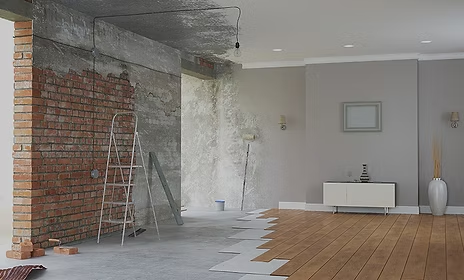A beautiful, lush lawn doesn’t just happen by accident; it requires consistent, attentive care to stay healthy. One of the most significant threats to a thriving lawn is disease, which can lead to brown patches, thinning, and other unsightly issues. With comprehensive lawn care and maintenance services, it’s possible to prevent and treat common lawn diseases, ensuring your landscape remains resilient year-round.
For a deep dive into lawn care tips, Relxnn offers valuable insights on outdoor maintenance and best practices. Here’s an overview of the key services that support disease-free lawns and tips for preventing issues before they arise.
Why Lawn Disease Prevention Matters
Lawn diseases often stem from a combination of environmental factors and poor care practices. Even well-kept lawns can fall prey to disease if they encounter stressors such as extreme weather, poor drainage, or overcrowded growth. Working with professionals who provide tailored lawn care and maintenance services is essential to prevent diseases from gaining a foothold.
Common diseases, such as brown patch and dollar spot, can spread quickly under favorable conditions, damaging your lawn’s health and appearance. Fortunately, expert care, including preventative and responsive treatments, offers effective solutions for these challenges.
Strategies for Disease Prevention and Treatment
Here are several crucial methods to keep your lawn disease-free, covering both preventative measures and treatment options.
1. Routine Lawn Care for Mowing
Proper mowing plays an important role in lawn disease prevention. Maintaining an optimal height for the grass helps it stay healthy, promoting better airflow and sunlight distribution. Professional lawn care for mowing ensures that your lawn is trimmed at the right height based on seasonal conditions, reducing the risk of stress that could lead to disease.
Grass that’s mowed too short can become stressed, making it susceptible to pathogens and fungal growth. By partnering with a lawn care service, you can avoid common mowing mistakes that compromise the health and resilience of your lawn.
2. Targeted Lawn Disease Treatment
Sometimes, despite the best prevention efforts, lawns may still develop diseases due to unforeseen weather or environmental changes. That’s where expert lawn disease treatment becomes essential. Professional treatment can address diseases early, preventing them from spreading and causing further damage.
Some common lawn diseases include:
- Brown Patch: This fungal disease causes circular brown patches and thrives in humid, warm conditions.
- Dollar Spot: Identified by small, dollar-sized spots, this disease often occurs in nitrogen-deficient lawns.
- Red Thread: Seen as reddish threads on the grass, red thread occurs in cool, damp weather.
To treat these issues effectively, professionals use targeted fungicides and treatments tailored to your lawn’s needs. Regular inspections and treatments not only resolve current issues but also help prevent future outbreaks.
Seasonal Lawn Care and Maintenance Services for Disease Prevention
An effective lawn care plan covers essential seasonal services, which vary depending on your location, climate, and lawn type.
Fertilization and Nutrient Management
A balanced fertilization plan strengthens grass, improving its ability to resist disease. By providing essential nutrients at the right times, such as in early spring and fall, fertilization promotes growth and resilience. Regular nutrient management is key to minimizing susceptibility to pests and pathogens.
Watering Techniques and Moisture Control
Moisture plays a large role in lawn health. Overwatering can promote fungal growth, while inadequate watering can weaken grass. Deep, infrequent watering encourages deep root growth, making your lawn more drought-tolerant and disease-resistant. Avoid watering in the evening, as lingering moisture on the blades overnight can encourage fungi to develop.
Aeration and Thatch Control
Over time, soil can become compacted, and a layer of thatch (dead plant material) can build up, limiting the flow of water and nutrients to the roots. Regular aeration helps improve soil structure and reduces compaction, while dethatching allows for better air circulation and healthier grass. These processes also create an environment less conducive to diseases.
For expert help with your lawn’s disease prevention and seasonal maintenance needs, Webb Landscaping and Turf Management provides professional services tailored to local conditions. If you’re looking for additional resources on creating a beautiful outdoor space, Relxnn also offers practical tips on various home and garden topics.









